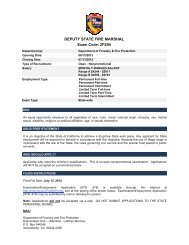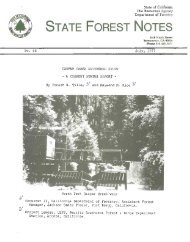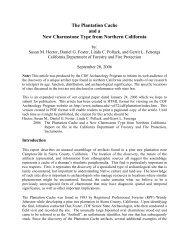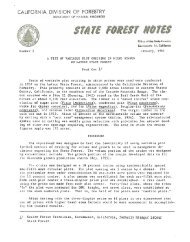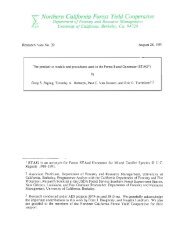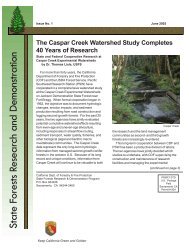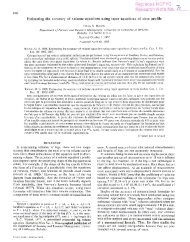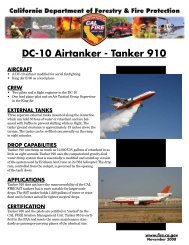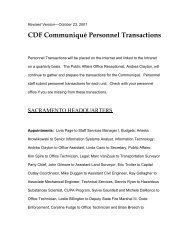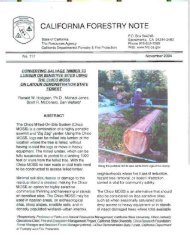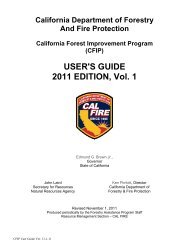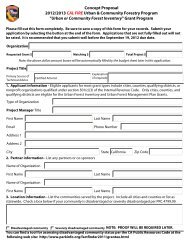You also want an ePaper? Increase the reach of your titles
YUMPU automatically turns print PDFs into web optimized ePapers that Google loves.
2005 Riverside <strong>Unit</strong> Pre-Fire Management Plan<br />
Frequency <strong>of</strong> Severe Fire Weather<br />
Fire behavior is dramatically influenced by weather conditions. Large costly fires are<br />
frequently, though not always, associated with severe fire weather conditions.<br />
Severe fire weather is typified by high temperatures, low humidity, and strong<br />
surface winds.<br />
The Fire Plan’s weather assessment considers different climates <strong>of</strong> <strong>California</strong>, from<br />
fog shrouded coastal plains to hot, dry interior valleys and deserts to cooler windy<br />
mountains. Each <strong>of</strong> these local climates experiences a different frequency <strong>of</strong><br />
weather events that lead to severe fire behavior (severe fire weather).<br />
The Fire Plan’s weather assessment uses a Fire Weather Index (FWI) developed by<br />
USDA Forest Service researchers at the Riverside Fire Lab. This index combines air<br />
temperature, relative humidity, and wind speed into a single value index. This index<br />
can be calculated from hourly weather readings such as those collected in the<br />
Remote Automatic Weather Station (RAWS) data collection system. The FWI does<br />
not include fuel moistures, fuel models and only uses topography to the extent that<br />
RAWS station weather readings are influenced by local topography.<br />
Weather assessment information will used to help analyze how changes in fire<br />
suppression forces will affect the <strong>Unit</strong>’s level <strong>of</strong> service.<br />
35




